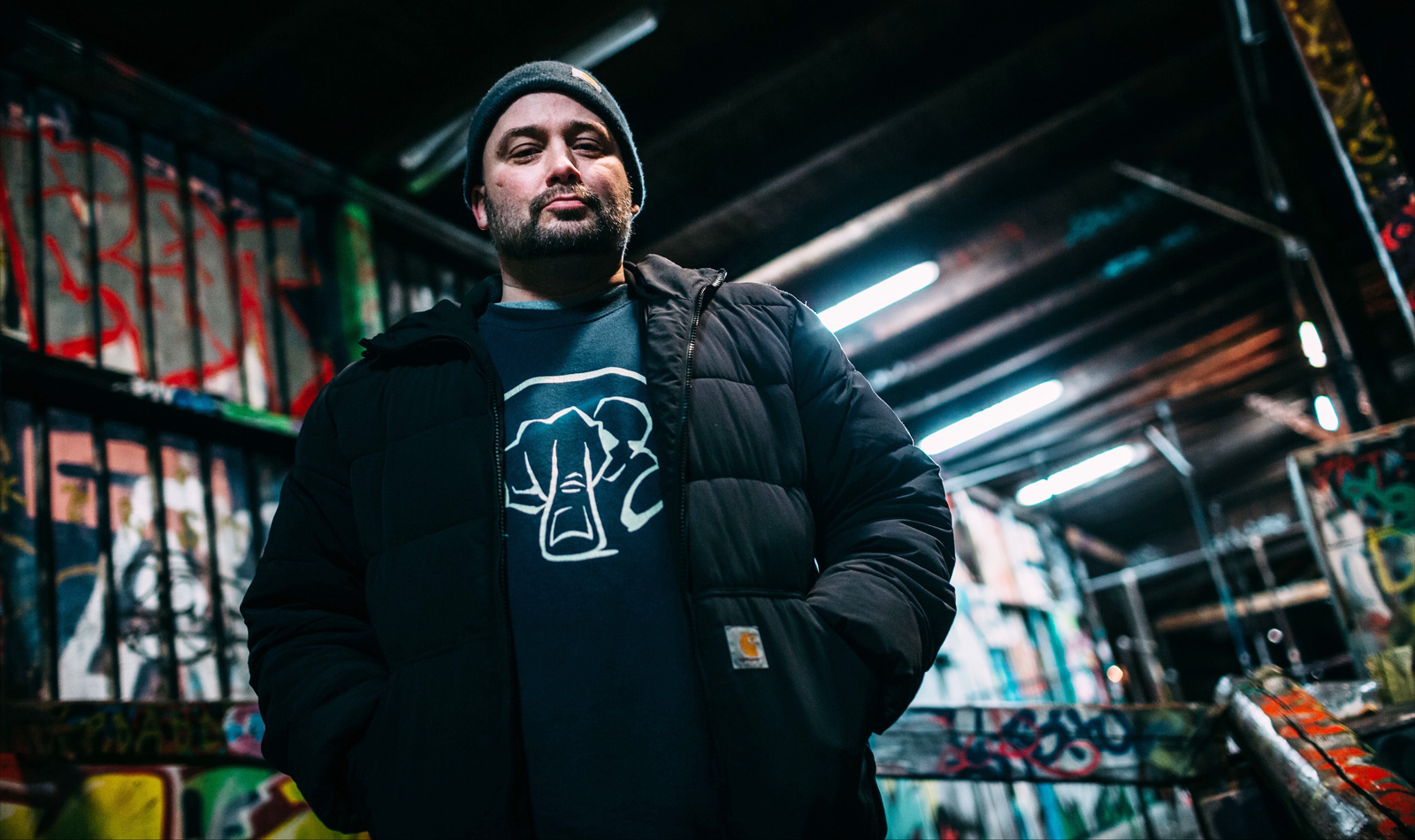KingsOfKings
🍊 Let's Talk Numbers 🍊

Copenhagen has been an unlikely haven for underground hip-hop artists. For the last six years, the label Copenhagen Crates has powered underground hip-hop artists’ physical releases, steadily growing in both respect and popularity around the world, and the scene in general is defined by its deep appreciation for the culture. Within that scene, Danish producer Machacha has become known for both his distinctive production style and his collaborative work with artists like Estee Nack and Mickey Diamond, Ankhlejohn, Nowaah the Flood, and countless others. In works such as “The Dakota Arms” from Lead Lined Wall, he demonstrates his expertise with a commanding beat that evokes the same atmospheric and cinematic qualities that turn up in the best Hitchcock film. The loop is minimal but impactful, driven by a bold bassline.
Machacha learned to play instruments at a young age, inspired by his father’s background as a teacher. Later, he discovered Jim Morrison and The Doors, whose music had a significant impact on his musical development—particularly “The Crystal Ship.” He was so intrigued by The Doors uniqueness, that he was determined to carve out a signature sound for himself. (He also has a side project called Hemmelige Alfabeter with Swab, where they pay tribute to the legendary group.)
He’s also a fan of Nirvana, and you can hear the way those same dark, mysterious nuances turn up in his own magnetic melodies. Blending hip-hop with distinctive samples, Machacha has landed on a signature sound that resonates with a wide audience (the vinyl for his album The Ghost Orchard with Vega7 the Ronin sold out almost immediately). For Machacha, success isn’t about popularity or stats—it’s about creating an authentic contribution to the culture that is important to him.
How was music influential to you when you were younger?
My dad played me all kinds of music—he was a creative soul himself. He did art and taught art at schools. He taught me a lot about sticking to your own ideas and believing in them. I’ve always listened to a lot of different music genres—I think that helped my career as a producer. I’m inspired and influenced by the talented musicians admire [like] DJ Premier, Alchemist, Showbiz—classic hip-hop producers—to people like Timbaland and Neptunes and Nirvana, Jimi Hendrix and the Doors. I’m inspired by talented people who get things done!
How did you get into producing beats?
I started rapping in 1997, when I was around 16 years old. When I was 21, me and my group at the time got ourselves a record deal. The next couple of years, we toured the country and played a lot of live shows. After that, I began to produce myself. So from the late ’90s, I was into making beats as well as rapping.
Do you play instruments?
I play many instruments. I can play guitar, keys, and bass. My most important instrument has also been my ability to work with and chop samples
Can you remember the first beat you made?
I actually do! I don’t recall the sound, but I do remember the effort. The first beat I did was on an Amiga 500 with an external sampler that could sample around five or six seconds, I believe. I was blown away. I was sure that this beat was a certified banger! It wasn’t.
What was it like hearing someone rap on your beats for the first time?
I can’t remember the first time it happened to be honest, but it’s always a nice feeling hearing someone rap over a beat you’ve made.
You’ve managed to work with some of the most revered artists in underground hip-hop. How did that come about?
Martin [from the label Copenhagen Crates] really helped me in terms of hooking up with rappers, especially on the first releases I did through them. Now, I’ve got a huge network in the U.S. thanks to Martin who let me do some projects with him and rappers like jaH-Monte, Jay NiCE, and Ty Farris. Big shout-out to Martin and the Copenhagen Crates movement. Currently, I spend much of my time focusing on my own activities, which includes listening to underground rappers. Sometimes I hear cats whose sounds draw my attention and I contact them. For me, [someone’s] streams and popularity come second—talent and proficiency in rap are the qualities I seek in an artist.
Can you tell me more about Copenhagen? What was the hip-hop scene like there while you were growing up?
I discovered rap music in the late ’80s. From ‘91 on, I was totally hooked. My first mixtape that I got from a friend of mine had EPMD, Geto Boys, and Gang Starr. The self-titled Geto Boys album opened a whole new world to me—a Danish kid in Copehnagen. In the ’90s and the ‘00s there was a lot of rap concerts in Denmark, and some very cool rap festivals around the country. My first rap concert was Gang Starr in ‘92—still one of the best concerts I’ve been to. My favorite concerts, off the top of my head, is Gang Starr ‘92, Tribe Called Quest ‘94, Sean Price 2013, and several Redman concerts. The hip-hop scene in Denmark in the late ’90s was growing, and there was one or two jams every week. Nowadays, the popular sound here is primarily like popular rap in the U.S., so I don’t go to too many jams anymore.
How did Copenhagen become this new “hip-hop Mecca” for the underground?
To be honest, I’m not sure I would call Copenhagen a hip-hop mecca! That’s a very strong word, nahmean? But I will say this: Copenhagen and the rest of Denmark has always produced a lot of very talented cats. That goes for graffiti artists, breakers, producers, and rappers. But to answer your question: Hip-hop fans worldwide have been talking about Copenhagen lately because of Copenhagen Crates, it’s that simple. So a giant shout out to Copenhagen Crates!